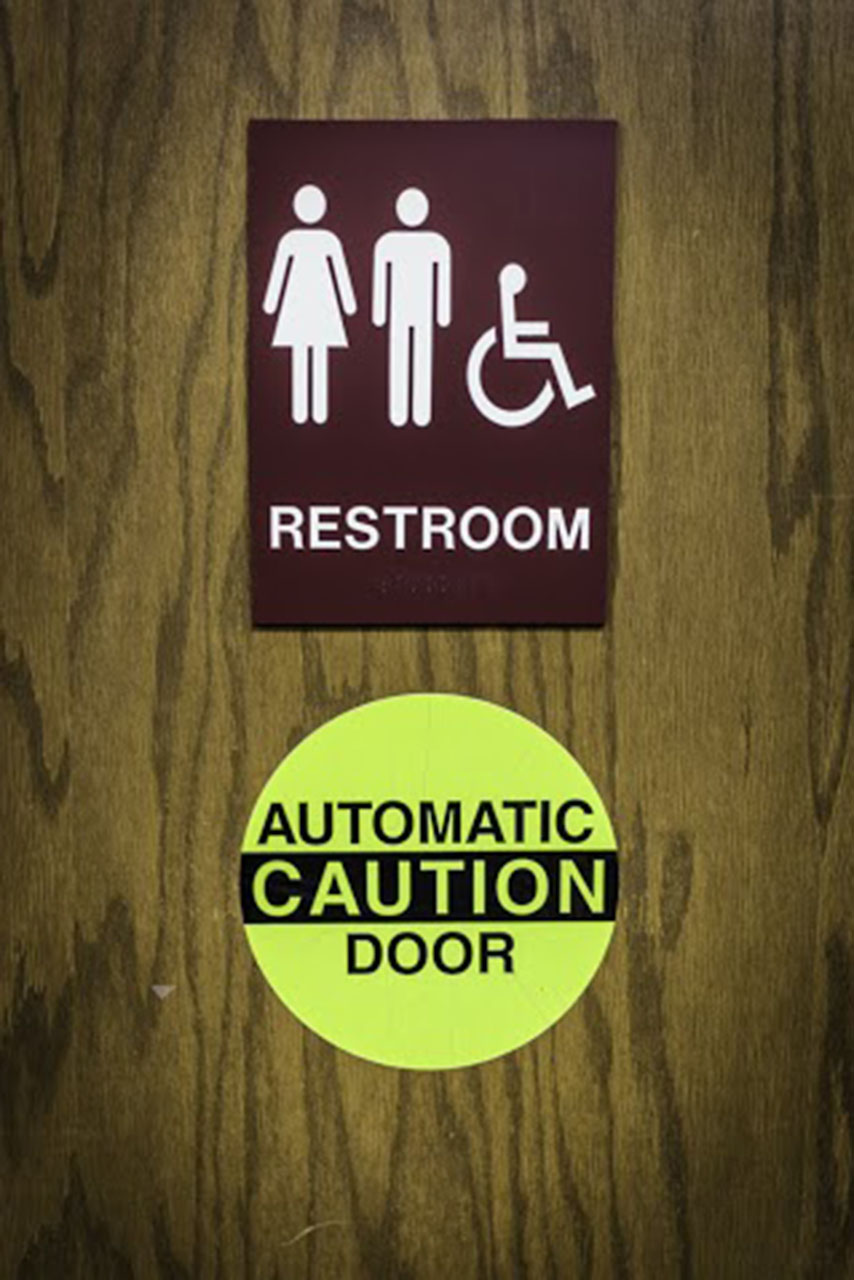
Jeff Miller, a Concordia senior and Mr. Concordia contestant, does not feel safe using most of the bathrooms on campus.
“Gendered bathrooms are very difficult for me to use because of experiences I’ve had in them, even on this campus,” Miller said. “I’ve received glares, questioning glances and death threats.”
Miller is a transgender student on campus, meaning he was born anatomically female but has always identified with masculinity. He has also undergone hormone therapy for the past two years to gain testosterone and top surgery a year ago – a choice for which he feels reaffirmed every day.
“After transitioning, I finally felt like things were finally coming together, and that I had a sense of purpose,” Miller said. “I’m much happier in who I am, and I’ve become more confident and comfortable with myself.”
Despite strides in self-esteem, Miller is not entirely without worry. He feels anxious and stressed about using gendered bathrooms. The solution, he says, are gender-neutral bathrooms.
“Gender neutral bathrooms are bathrooms that aren’t categorized based on gender. They are generally single stall so there is safe access for everyone,” said Geneva Nemzek, senior co-President of Concordia’s Straight and Gay Alliance (SAGA).
Nemzek, one of two co-Presidents of SAGA, has been involved with the issue of gender-neutral bathrooms since before her SAGA days.
“I had a really good friend go through a transition,” Nemzek said. “Prior to his transition, I had never thought about the issue. But, while he was transitioning, that was really difficult for him. I’ve been conscious of it ever since.”
Nemzek believes transgender people are not the only ones positively affected by a switch to single stall, gender-neutral bathrooms.
“These bathrooms can help anyone who dislikes using public restrooms or, most importantly, makes them more accessible for handicapped students.”
Nemzek said that the single stall method leads to a larger and more wheelchair accessible bathroom, which is more inclusive of anyone with a physical disability. The gender-neutral aspect allows every one of these bathrooms to become an option for these students.
“It’s all about increasing accessibility,” Nemzek said.
Nemzek specified that when several students on campus told SAGA they were affected by the lack of gender-neutral bathrooms, SAGA decided to take action.
“SAGA has formed a committee based on this project. We intend to work toward increasing the number of gender-neutral bathrooms on Concordia’s campus,” Nemzek said.
In order to begin this process, the committee has completed some preliminary planning steps, including drafting a proposal set to be reviewed by the Department of Facilities and Services.
The committee has reached out to Wayne Flack, the Director of Facilities Management, to make sure their goals are feasible from a structural standpoint. Nemzek emphasized SAGA’s desire to set realistic goals for their committee, specifically in regards to which bathrooms they seek to reappropriate.
“We had to avoid looking at some of the larger bathrooms on campus,” Nemzek said. “Since so many students can and often do use those larger bathrooms at the same time, it wouldn’t be feasible to change them.”
After ruling out several of the larger options, SAGA solidified a list of bathrooms that have the potential to be changed. Some of the locations identified by the committee include the Maize, Bishop Whipple floors two and three and Hvidsten.
Along with these academic buildings and public spaces, SAGA will also be looking at the residence halls.
“We are trying to do our homework to see the best ways to bring a more inclusive bathroom
system into a dorm system that is 100% sorted by gender,” Nemzek said.
Even in the wake of intervisitation policy change within the residence halls, identifying dorm bathrooms to become gender-neutral is a larger undertaking because the buildings themselves are not equipped for this type of change.
“In many cases, our facilities don’t lend themselves to these types of accommodations,” said Jasi O’Connor, Director of Residence Life at Concordia. “Especially for … traditional residence halls – we just aren’t set up for that.”
Despite a structural inability to make dorm bathrooms completely inclusive, O’Connor said that developing a safe environment for transgender students is a top priority for the Office of Residence Life.
“When a student tells us they are transgender, (Residence) Life works to place them in the housing that best fits their needs,” O’Connor said.
With groups like SAGA and offices like Residence Life aware of existing support for gender-neutral bathrooms, Nemzek says it is only a matter of time before these changes occur.
“Support is growing quickly on campus because students appear to want this shift,” Nemzek said.
More than anything, Nemzek wants students like Miller to feel just as comfortable using the bathroom as anyone else.
“No one gets harmed by increasing the number of gender-neutral bathrooms,” Nemzek said. “Everyone still gets to use them – it’s just that more people are included in the process.”
